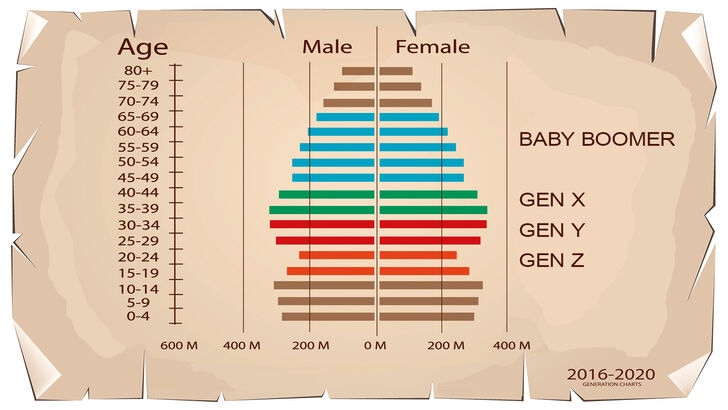Welcome to part 2 of my Enterprise Agility blog series. In Enterprise Agility part 1, we looked at pace of agile adoption. In part 2, let’s discuss the impact of agile change programmes on people from different age generations.

I am not a big fan of stereotypes but the so called ‘Generations’ are becoming more significant, both outwardly in terms of how we segment the markets and inwardly when we consider our workforce. Within many organisations it is entirely possible to see Baby Boomers, Generation ‘X’, Generation ‘Y’ (Millennials) and Generation ‘Z’ represented, each group having different traits and work ethics. According to the American Psychological Association1, Boomers are workaholics whereas Generation ‘X’ favour work-life balance and Millennials look for diversity and change. Generation ‘Z’ want job stability as well as flexibility around factors such as remote working and other non pay related benefits.
Given the potential for differences in work-life balance across the Generations, can this affect the speed and extent to which agile is adopted within an organisation? Does this diversity offer a benefit or present an obstacle to change?
I wonder to what extent these stereotypes may effect peoples attitude towards work? I have certainly noticed that people in the older generations appear to be more sceptical towards agile which is hardly surprising as during their typically long careers they will have been subject to many different change programmes driven by mergers and acquisitions, Lean/Just in Time, system engineering , leadership development, quality improvement to name a few. From colleagues who fall into the Baby Boomer and Gen. ‘X’ groups I have observed resistance to the perceived unstructured and flexible approach agile encourages for fear of loosing robustness, teams failing to deliver and missing deadlines. When I listen to the more youthful I hear them talking about the importance of collaboration, the need for clear direction, simpler reporting lines, less meetings and more flexibility. They are unhappy about bureaucracy, inflexible project plans and deadlines, rewards given to herculean efforts rather than upfront innovation.
| Past Focus | Emphasises | Risk of | Agile wants to… |
| Mergers & Acquisitions | Growth, market expansion, financial control, increased efficiency. | Siloed behaviour, competition. | Create environment of collaboration & collective performance. |
| Lean / Just in Time | Eliminate waste, process mapping, reduce inventory. | Over process? | Minimise process, give teams flexibility. |
| Systems Engineering | Structure, robustness, process, V cycle matched to waterfall thinking. | Conservative approach, longer time to market, customer feedback too late. | Build quickly and incrementally, seek quick customer feedback. |
| Quality Led Programmes | Carefully controlled and well tested approach, continual refinement based on field failures and complaints. | More conservative approach to innovation. | Get to market quickly with innovative value. |
| Leadership Development | Delegation, hierarchy & spans of control, focus on upfront objectives. | Hands off approach, rigidity, command & control. | Focus on team objectives, flattened structure, create a ‘doing’ organisation. |
When I look at this table though I immediately think, diversity is good not bad! Each of these approaches has its own merits and arguably was right for the time. Why not harness the different approaches together to help flex in line with the turbulent market conditions. For example, regulated industries like medical, aerospace, automotive need robustness and traceability in the agile ways of working which lends itself to blend Systems Engineering AND Agile. Why not run the same system ‘V’ cycle but just for a slice of the work that can complete in an increment to demonstrate something working. Quality related feedback can surely help to shape and drive the value of future products and, of course, agile did start life from ‘Lean’ where one seeks to first understand the value you wish to create.
How then do we encourage legacy and newer ways to work in unison? How can we leverage the diversity of all the generations working together? Surely it has to start with a conscious willingness to allow the different traits, knowledge and ways of the Generations to coexist. Let us not forget everything that was learnt in the past and the wealth of knowledge held by the Baby Boomers and Gen X but equally we should embrace the fresh thinking of the younger generations and be open minded on how agile could deliver the next big step.
What Generation group are you part of and how does this blog make you feel?
1 American Psychological Association Journal June 2005, Vol 36, No. 6
About Simon Chandler
Simon feels passionately about continuous learning and improvement. Loves a good chat on Product Ownership & Agile Transformation.